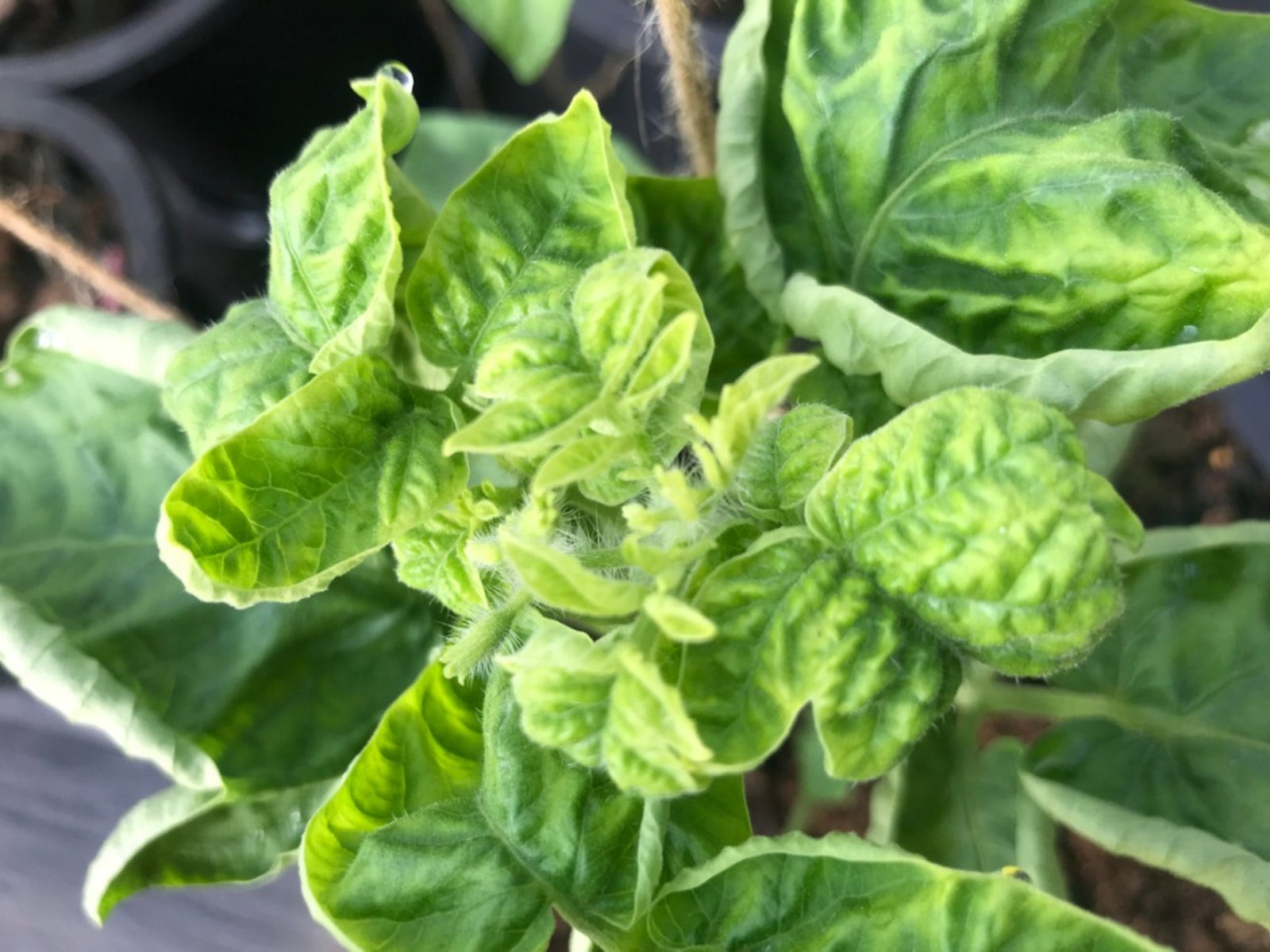Tomato Curly Top Virus: Tips For Treating Curly Top Virus

Curly top on plants can devastate your garden crops. Prevention is the only effective means of treating curly top virus. What is curly top virus you ask? Keep reading for more information.
What is Curly Top Virus?
Curly top virus can be found in over 44 plant families such as garden tomatoes, beets, beans, spinach, cucurbits, potatoes, and peppers. Sugar beets are the most commonly infected hosts, and the disease is often referred to as Beet Curly Top Virus (BCTV). The disease is transmitted via the tiny sugar beet leafhopper and is most prevalent when temperatures are warm and populations of leafhoppers are greatest.
Curly Top Virus Symptoms
Although symptoms vary among hosts, there are some similar signs of infection. The infected leaves of some host plants, especially tomatoes and peppers, become thick and stiff, rolling upwards. The leaves of beets become twisted or curly. If plants are very young and become infected, they will usually not survive. Older plants that become infected will survive but will display stunted growth. It is sometimes hard to know the difference between curly top on plants and heat stress. The best way to determine what is ailing your plants is to water the plant thoroughly in the evening and check it in the morning. If the plant still shows signs of stress, it is most likely curly top. Another way to tell the difference between heat stress and curly top virus is if the symptom display is very random throughout the garden.
Treating Curly Top Virus
While there are no cures for this rapidly spreading virus, some preventative measures may help. It only takes seconds for the leafhopper to infect a plant and then jump to another plant. Tomato curly top virus, as well as pepper curly top virus, can be avoided if some shade is provided. The leafhopper feeds mostly in the direct sunlight and will not feed on plants that are shaded. Use a shade cloth in very sunny locations or place plants where they will receive some shade. A weekly spray of neem oil will also help keep the pesky leafhopper at bay. Remove all infected plants immediately.
Sign up for the Gardening Know How newsletter today and receive a free copy of our e-book "How to Grow Delicious Tomatoes".